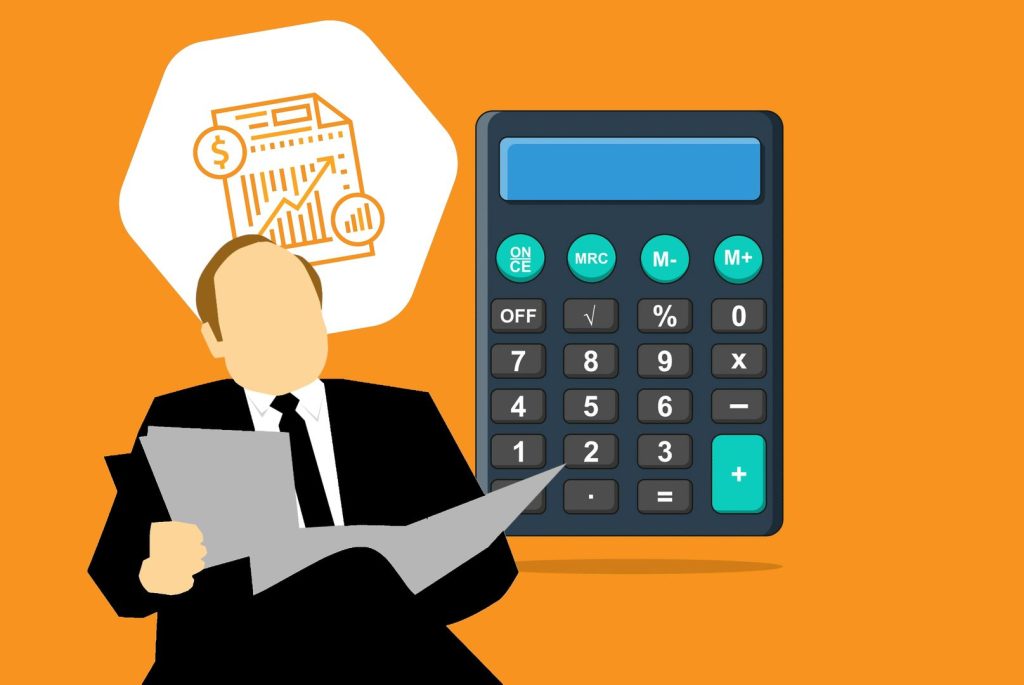Most of the private individuals never keep their accounts to record earned income or expenditure incurred by them. It is advisable for everyone to maintain an account to know what he has earned during a particular period, what he spent, and what was his saving out of that income. It is helpful to track the record of income and expenditure. It also helps to increase the income (as need arises) and control on the expenditure.
Maintenance of Accounts by Private Individuals
Private individual should keep his books on cash basis system, ignoring accrued system in different heads like insurance premium paid, medical insurance, school fees, taxes, household expenses, medical expenses, clothing, salary received, bank interest, income from mutual fund, rent received, and other income received.
For all these, one should keep a cash book, which can be summarized on monthly basis as per the abstract of cash Book given below −
Abstract Cash Book
| Particulars (of Income) | Amount | Particulars (of Expenditure) | Amount |
| To Balance b/dTo SalaryTo Rent receivedTo Saving Bank InterestTo Interest on FDRTo Income from InvestmentTo Income from profession or BusinessTotal | xxxxxxxxxxxxxxxxxx | By Kitchen ExpensesBy Electricity ExpensesBy School/College feesBy ClothingBy Insurance Premium(Life insurance, medi-claim, accidental insurance, other Insurance like fire, theft etc.)Total | xxxxxxxxxxxxxx |
In case of professional individual, one more column can be added in the cash book to show professional transaction and personal transaction separately. In addition to above, an individual may keep a register to maintain the record for his assets including car, building, investments, etc.
Maintenance of Accounts by Professionals
A cash basis of accounting is the most suitable system for any professional including doctor, accountant, or solicitor instead of a mercantile system to fulfill the following purposes −
· To ascertain the professional income earned by him correctly for a specific accounting period, and also to calculate the net professional income after deducting the related expenses from the professional income.
· To correctly record all items of income and expenditure.
Following records should be maintained by a professional −
Cash Book
All receipts and payments should be recorded in a cash book, and a memorandum book should be maintained to keep record of credit transactions. The credit transactions will be scored off at the time of actually cash receipt or at the time of payment made and should be entered in the cash book.
A cash book can be summarized under various heads on monthly, quarterly, half yearly, or annual basis as per the suitability and requirements.
Stock Register
Two separate stock registers should be maintained, one for resale items and other to keep record of the items of personal use. Resale items may be medicine, surgical items, the stationery items, electrical items, computers, and any other items or asset.
Receipt and Expenditure Account
A receipt and expenditure account is similar to a profit and loss account; therefore, it is prepared by the professionals to know the professional income and expenditure for a specific period. Outstanding incomes are ignored to prepare it, but outstanding expenses are included in it. Therefore, it is known as Receipt & Expenditure account instead of Receipt & Payment account. It means, incomes are recorded on a cash basis and expenditure on an accrual basis.
Maintenance of Accounts by Doctors
Doctors usually maintain a register that may also be known as diary or note book in which all the particulars of the patients including charges, fees, physical conditions of patient, etc. are recorded. After grouping, the extracted entries of diary are recorded in the cash book under different heads of income. Similarly, expenses are also recorded under various heads.
In case, where the number of doctors is two or more than two and they run their clinic in the partnership, income may be recorded in the cash book under various heads (Doctor Wise), similar to a petty cash book pattern. Similarly, the expenses relating to each doctor may be recorded under various heads of the expenses.
Thus, cash book, stock register, memorandum book, Receipt and expenditure account, and Balance sheet are prepared by the doctors.
Illustration
Dr. Ortho starts his medical practice on 1st January 2013 and introduced a capital of Rs. 300,000/. Receipt and payment account as on 31-12-2013.
| Receipt | Amount (Rs.) | Payment | Amount (Rs.) |
| To Consultation ChargesTo Capital Introduced | 2,500,000300,000 | By Clinic RentBy Salary to StaffBy Books & PeriodicalsBy Medical EquipmentBy Other expensesBy Balance c/dCash in handCash at Bank | 240,000300,00015,000450,00038,00057,0001,700,000 |
| Total | 28,00,000 | Total | 28,00,000 |
- Outstanding salary Rs. 50,000
- Medical equipment was purchased on 01-04-2013
- Depreciation on Equipment is Rs. 15%
Solution −
Receipt & Expenditure Account of Dr. Ortho
For the year ended 31-12-2013
| Expenditure | Amount | Receipt | Amount |
| To Clinical RentTo Salary to Staff300,000Add: OutstandingSalary50,000————To Books & PeriodicalsTo Other ExpensesTo Depreciation on EquipmentTo Surplus – Excess of Receipt over Expenditure | 2,40,000350,00015,00038,00050,6251806,375 | By Consultation Charges | 25,00,000 |
| Total | 25,00,000 | Total | 25,00,000 |
Dr. Ortho
Balance Sheet
As on 31-12-2013
| Expenditure | Amount | Receipt | Amount |
| Capital Introduced300,000Add: Surplus1,806,375_________Outstanding Salary | 2,106,37550,000 | Cash in handCash at BankMedical Equipment450,000Less: Depreciation50,625_______ | 57,0001,700,000399,375 |
| Total | 2,156,375 | Total | 2,156,375 |
Maintenance of Accounts of Educational Institutions
Most of the educational institutions are registered under Indian Society Registration Act, 1860. The core purpose of formation of the educational institutions is to educate people at large and not to earn profit.
Generally, following financial transactions are being incurred by the educational institutions −
| Main Sources of Collection | Types of Expenses/Payments |
| · Admission fees, tuition fees, Examination fees, fines etc.· Security deposit by students· Donations from public· Grants from Government for building, prizes, maintenance, etc. | · Salary, allowances, and provident fund contribution to teaching and nonteaching staffs.· Examination expenses· Stationery & printing expenses· Distribution of scholarships and stipends· Purchase and repair of furniture & fixture.· Prizes· Expenses on sports and games· Festival and function expenses· Library books, newspaper, magazines, etc.· Medical expenses- medicine and examination· Audit fees and audit expenses· Electricity expenses· Telephone expenses· Laboratory running & maintenance· Laboratory equipment· Building Repair & maintenance |
Separate collection register should be maintained to record these collections from the above mention sources. Separate ledger for students should also be maintained for each student to record the fees — due, received, and outstanding if any.
Normally, all accounting records are maintained on the basis of financial year i.e. from 1st April to 31st March in most of the educational institutions. Educational institutions maintain income and expenditure account to keep the records of surplus or deficiency and also to prepare a Balance sheet to know the financial position of the institution.
Consolidation of Accounts of various Educational Institutions
Consolidation of accounts is done step by step, where various institutions are run under one society.
The given example is an illustration of the simplified procedures −
Consolidation of Fees
Institute wise consolidation will be done as hereunder −
| Opening Balance of Fees DueAdd: Fees due during the current financial yearLess: Fees collected during the current Financial YearOutstanding Fees at the end of the year | |
| XXXXXX | |
| XXXXXXXX | |
| XXX |
Illustration
Trial Balance of the Brilliant education society as on 31st March, 2013 is given as here under, please prepare an Income and Expenditure Account and a Balance sheet on that date −
| Particulars | Amount (Debit) | Amount (Credit) |
| Cash in Hand | 68,000 | |
| Cash at Bank | 802,000 | |
| Scholarship Fund Investment | 800,000 | |
| Miscellaneous Expenses | 420,000 | |
| Interest received on Scholarship Fund | 80,000 | |
| Interest Received on Investment | 55,000 | |
| Investment | 550,000 | |
| Sundry Creditors | 236,000 | |
| Building | 1,700,000 | |
| Furniture & Fixture | 200,000 | |
| Addition to Furniture & Fixture | 25000 | |
| Vehicles | 280,000 | |
| Sundry Debtors | 260,000 | |
| Capital Fund | 2,400,000 | |
| Donation for Capital Fund | 500,000 | |
| Entrance Fees | 40,000 | |
| Course Fees | 1,600,000 | |
| Examination Fees | 70,000 | |
| Auditorium Rent Received | 850,000 | |
| Salary | 1,100,000 | |
| Printing & Stationery | 50,000 | |
| Scholarship Awarded | 36,000 | |
| Scholarship Fund Reserve | 360,000 | |
| Government Grant Received | 100,000 | |
| Total | 6,291,000 | 6,291,000 |
Additional Information
· Salary for one month is outstanding.
· Outstanding Auditorium is Rs, 50,000/- and Rs. 25,000 received in advance.
· Depreciation is to be provided at 5% on building, 10% on Furniture & Fixture, and 15% on vehicles.
Solution
In the Books of Brilliant Education Society
Income & Expenditure Account
For the Year ended 31st March, 2013
| Expenditure | Amount | Income | Amount |
| To Printing & StationeryTo Salary1,100,000(+) OutstandingSalary100,000————–To Miscellaneous ExpensesTo Scholarship awardedTo Depreciation:Building @ 5%85,000Furniture & Fixture22,500Vehicles @ 15%42,000————–To Surplus of Income over Expenditure | 50,0001,200,000420,00036,000149,500964,500 | By Entrance FeesBy Examination FeesBy Course FeesBy Auditorium Rent850,000(+) OutstandingRent50,000————–900,000(-) Advance RentReceived25,000————–By Government GrantsBy Interest received on scholarship fund | 40,00070,0001,600,000875,000100,00080,00055,000 |
| Total | 2,820,000 | Total | 2,820,000 |
Balance Sheet
As on 31-03-2013
| Liabilities | Amount | Assets | Amount |
| Capital Fund2,400,000Add: Donation500,000—————2,900,000Add: Surplus964,500—————Scholarship FundSundry CreditorsSalary outstandingRent received in advance | 3,864,500360,000236,000100,00025,000 | Building1,700,000(-) Depreciation@ 5%85,000————–Furniture & Fixture200,000(+) Addition25,000————–225,000(-) Depreciation @10%22,500————–Vehicles280,000(-) Depreciation @15%42,000————–InvestmentsScholarship Fund InvestmentSundry DebtorsRent receivableCash in handCash at Bank | 1,615,000202,500238,000550,000800,000260,00050,00068,000802,000 |
| Total | 4,585,500 | Total | 4,585,500 |
Maintenance of Accounts of Student Hostels
Hostels are run by most of the educational institutions to provide boarding facility to the students, coming from remote places, for their education. Hostels are usually run on no profit basis. Government also grants some fund to these hostels to provide cheaper living space to the students.
Like any other non-profit organization, hostels also have accountants who record and maintain their financial transactions as −
- Receipt & Payment Account
- Income & Expenditure Account
- Balance Sheet
Following are the common lists of incomes and expenditures incurred by Hostels −
| Main Source of Collection | Types of Expenses/Payments |
| · Admission fees· Security (refundable at the time of entering into the hostel)· Room rent· Electricity, water, fans, coolers, heaters & geysers charges etc.· Government grants· Fees for reading room & common room.· Mess charges· Medical Fee. | · Electricity expenses· Water charges· Building repair & maintenance· Grocery & provisions for mess· Rent for hostel Accommodation (In case or rented premises)· Salary (Warden, watchman, sweeper etc.)· Telephone expenses· Newspaper and magazines |
Illustration
From the given information and Trial Balance, please prepare an Income & Expenditure account and Balance sheet of Divya Jyoti hostels (for the girls) for the year ending 31-03-2014 −
| Particulars | Amount (Debit) | Amount (Credit) |
| Opening Stock −· Food· Fuel· Drinks· Sundries | 31,5004,5003,0006,000 | |
| Purchases −· Food· Fuel· Drinks· Sundries | 1,065,00090,000135,00015,000 | |
| Wages −· Mess· Others | 337,50097,500 | |
| Annual Day Collection | 10,500 | |
| Building | 6,300,000 | |
| Capital Fund | 7,050,000 | |
| Cash at Bank | 466,500 | |
| Common Room Expenses | 24,000 | |
| Electricity and Water Charges | 28,500 | |
| Electricity and Water Charges | 42,000 | |
| Fans | 75,000 | |
| Furniture & Fixture | 225,000 | |
| General Fund | 450,000 | |
| Grants-Youth welfare Departments | 300,000 | |
| Heaters | 7,500 | |
| Income From Investments | 82,500 | |
| Indoor Games Material | 22,500 | |
| Investments | 750,000 | |
| Land | 750,000 | |
| Medical Expenses | 19,500 | |
| Mess Charges (for guests) | 30,000 | |
| Mess Fees | 1,770,000 | |
| Rent for fan Heater etc. | 16,500 | |
| Repair & Maintenance | 33,000 | |
| Room Rent | 352,500 | |
| Room Service Charges | 9,000 | |
| Security Deposits | 400,500 | |
| Total | 10,500,000 | 10,500,000 |
Additional Information
· Depreciation to be provided @ 5% on Building, Furniture, & Fixture; and 15% on heater and Fans.
· Closing stock: Food Rs. 22,500, Fuel Rs. 7,500, Drinks Rs. 4,500, and sundries Rs. 3,000.
Solution −
In the Books of Divya Jyoti Hostels
Income & Expenditure Account
For the Year ended 31st March, 2014
| Expenditure | Amount | Income | Amount |
| To Mess ExpensesFood: Opening Stock31,500Add: Purchases1,065,000————–1,096,500Less: Closing Stock22,500————–Fuel: Opening Stock4,500Add: Purchases90,000————–94,500Less: Closing Stock7,500————–Drinks: Opening Stock3,000Add: Purchases135,000————–138,000Less: Closing Stock4,500————–Sundries: Opening Stock6,000Add: Purchases15,000————–21,000Less: Closing Stock3,000————–To Wages : Mess337,500Others97,500————–To Electricity & Water ChargesTo Repair & MaintenanceTo Indoor Games MaterialTo Common Room ExpensesTo Medical ExpensesTo Depreciation:Building5%315,000Furniture10%22,500Heaters15%1,125Fans15%11,250————–To Excess of Income OverExpenditure | 1,074,00087,000133,50018,000435,00042,00033,00022,50024,00019,5003,49,8753,61,125 | By Room RentBy Rent for Heater, Fans, etc.By Grants-Youth WelfareBy Income From InvestmentsBy Annual Day CollectionBy Mess FeesBy Mess Charges for GrantsBy Room Service ChargesBy Electricity & Water Charges | 352,50016,500300,00082,50010,5001,770,00030,0009,00028,500 |
| Total | 2,599,500 | Total | 2,599,500 |
Balance Sheet
As on 31-03-2014
| Liabilities | Amount | Assets | Amount |
| Capital FundGeneral Fund450,000Add: Surplus361,125————Security Deposits | 7,050,000811,125400,500 | LandBuilding6,300,000(-) Depreciation@ 5%315,000————Furniture & Fixture225,000(-) Depreciation @10%22,500————Heaters7,500(-) Depreciation @15%1,125————Fans75,000(-) Depreciation @15%11,250————InvestmentsClosing Stocks:Food22,500Fuel7,500Drinks4,500Sundries3,000————Cash at Bank | 750,0005,985,000202,5006,37563,750750,00037,500466,500 |
| Total | 8,261,625 | Total | 8,261,625 |
Maintenance of Accounts of Hospitals
Being a non-profit organization, hospitals also maintain Receipt & Payment accounts, Income & Expenditure account, and Balance Sheet.
An illustration of the income and expenditure of a hospital is shown below −
| Main Items of Income | Types of Expenses/Payments |
| · Room Rent· Medical Care· Dentistry Charges· Delivery Room Charges· Anesthesia Charges· Laboratory Charges· Grants for operating needs of Hospital· Grants for fixed Assets· Donations· Miscellaneous Income· Interest on Investments· Fees from Nursing & Training School· Bed Charges· Operating Room Charges· X-ray Charges· Pharmacy Charges· Physiotherapy Charges | · Electricity & Water Charges· Pharmacy Charges· Salaries and Wages· Pharmacy Expenses· Building repair & Maintenance· Laundry Charges· Rent for Nursing Hostel Accommodation (In case or rented premises)· Telephone Expenses· Laboratory Expenses· Surgery Expenses· Operation Tools and Equipment Expenses· Depreciation |
Illustration
A charitable hospital and pharmacy are run by Rehmat Ali trust; following are the balances as extracted from its books for the year ended 31-03-2014 −
| Particulars | Amount (Debit) | Amount (Credit) |
| Consumption of· Medicines· Foodstuff· Drugs and ChemicalsClosing Stock of· Medicines· Foodstuff· Drugs and Chemicals | 360,000270,00090,00060,00012,0003,000 | |
| Salary | 540,000 | |
| Electricity | 315,000 | |
| Pharmacy −· Opening Stock· Purchase· Sale· Salary· Electricity | 165,000900,00045,0006,000 | 930,000 |
| Furniture & Fixture | 240,000 | |
| Ambulance | 90,000 | |
| Telephone Expenses | 78,000 | |
| Subscription | 63,000 | |
| Ambulance Charges | 2,400 | |
| Consumption of Housekeeping Items | 2,70,000 | |
| Bank Deposits @ 15% | 1,500,000 | |
| Cash in hand | 105,000 | |
| Cash at Bank | 720,000 | |
| Sundry Debtors | 181,500 | |
| Sundry Creditors | 824,100 | |
| Remuneration to Trustees | 63,000 | |
| Capital Fund | 2,700,000 | |
| Donation | 1,800,000 | |
| Fees | 900,000 | |
| Rent | 825,000 | |
| Food Supply | 420,000 | |
| Building | 960,000 | |
| Equipment | 1,365,000 | |
| Total | 8,401,500 | 8,401,500 |
Additional Information
· Depreciation to be provided @ 5% on Building; 10% on Furniture; 15% on Equipment; and 30% on Ambulance.
· Closing stock of medicine at pharmacy Rs. 120,000
· 15% of the fees received from patients to be paid to specialist doctors.
· Supply of medicines from pharmacy to the hospital Rs. 180,000 for which no adjustment has been made in the books of accounts.
Solution −
In the Books of Rehmat Ali Trust
Income & Expenditure Account of the Pharmacy
For the Year ended 31st March, 2014
| Expenditure | Amount | Income | Amount |
| To Opening Stock (Medicines)To Purchase of MedicineTo SalariesTo Electricity ExpensesTo Surplus of Income over Expenditure | 165,000900,00045,0006,000114,00 | By Sale (Medicines)By Medicine to HospitalBy Closing Stock | 930,000180,000120,000 |
| Total | 1,230,000 | Total | 1,230,000 |
Income & Expenditure Account of the Hospital
For the Year ended 31st March, 2014
| Expenditure | Amount | Income | Amount |
| To Consumption ofMedicines360,000Add:Medicine fromPharmacy180,000————To Consumption of Food StuffTo Consumption of Drugs & ChemicalsTo Consumption of House KeepingTo SalariesTo Electricity ExpensesTo SubscriptionTo Fees to specialist 15% of feesTo Telephone ExpensesTo Depreciation:Building5%48,000Furniture10%24,000Equipment 15%204,750Ambulance 30%27,000———— | 540,000270,00090,000270,000540,000315,00063,000135,00078,000303,750 | By FeesBy RentBy Recovery of Food supplyBy Ambulance ChargesBy Deficit (Excess of expenditure Over Income) | 900,000825,000420,0002,400457,350 |
| Total | 2,391,750 | Total | 2,391,750 |
Income & Expenditure Account of Trust
For the Year ended 31st March, 2014
| Expenditure | Amount | Income | Amount |
| To Deficit (Hospital A/c)To Remuneration to Trustee | 457,35063,000 | By Surplus (Pharmacy)By Interest due on fixed depositBy Net Deficit | 114,000225,000181,350 |
| Total | 520,350 | Total | 520,350 |
Statement of Affairs of Rehmat Ali Trust
As on 31-03-2014
| Liabilities | Amount | Assets | Amount |
| Capital Fund2,700,000Add: Donation1,800,000—————-4,500,000Less: Net Deficit (-)181,350—————-Sundry CreditorsFees Payable to specialist | 4,318,650824,100135,000 | Building960,000(-) Depreciation@ 5%48,000—————Furniture & Fixture240,000(-) Depreciation @10%24,000————-Equipment1,365,000(-) Depreciation @15%204,750————-Ambulance90,000(-) Depreciation @30%27,000————-Bank Deposits1,500,000Add: Interest Due225,000————-Closing Stocks:Medicine60,000Foodstuff12,000Drugs & Medicine3,000Pharmacy120,000————-Sundry DebtorsCash in handCash at Bank | 912,000216,0001,160,25063,0001,725,000195,000181,500105,000720,000 |
| Total | 5,277,750 | Total | 5,277,750 |


